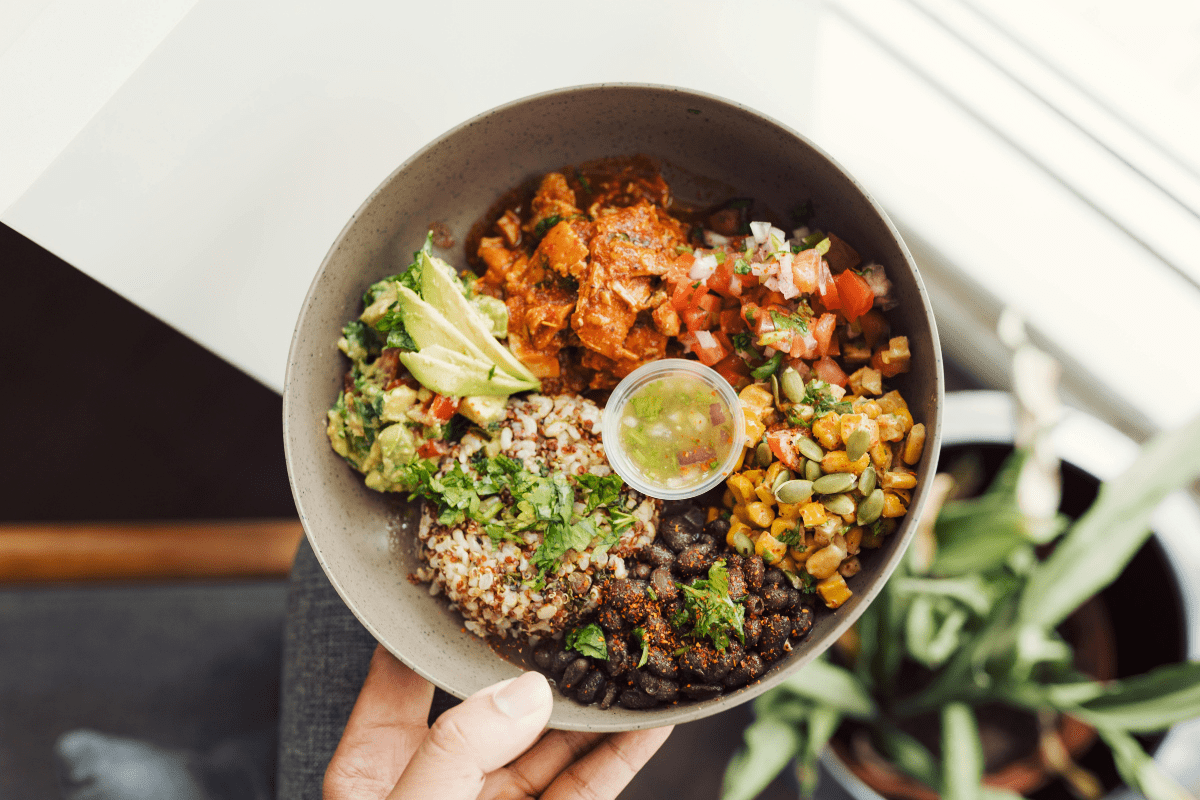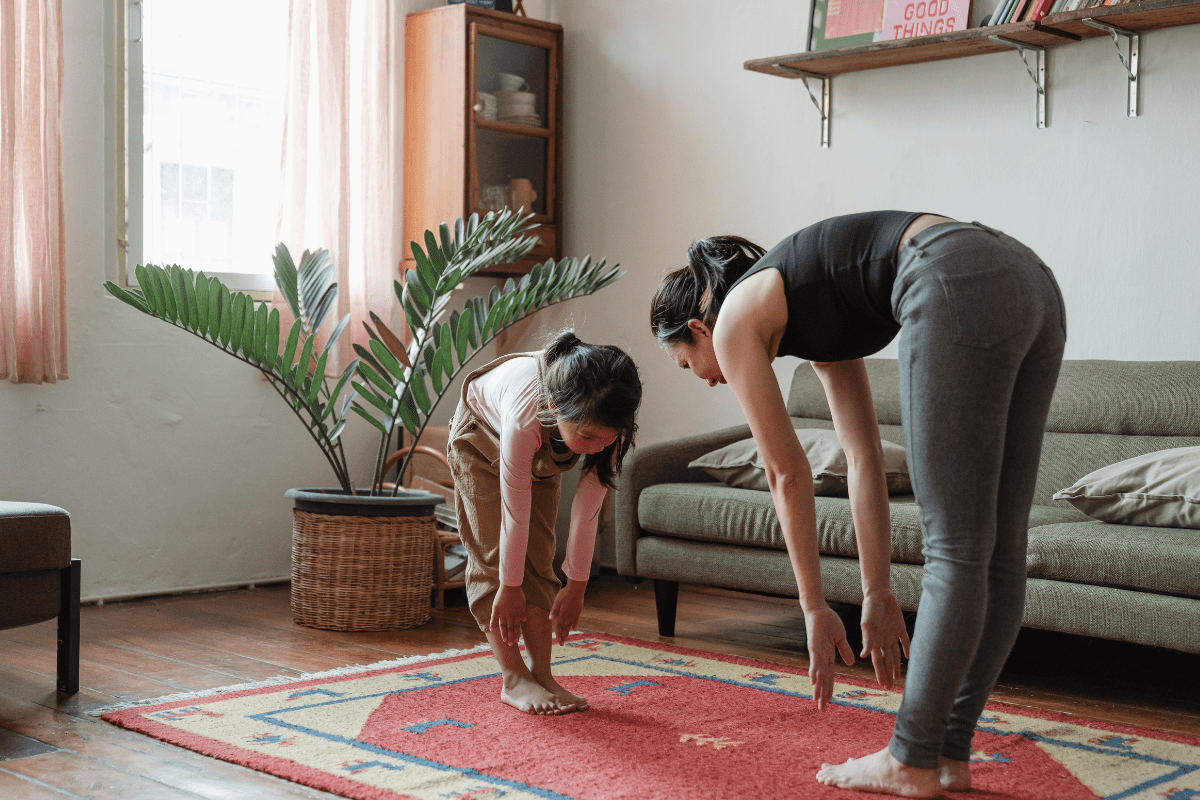You know that moment when you both get home from work, stare at each other, and ask the dreaded question: "What should we eat tonight?" If you're tired of defaulting to cereal or expensive takeout, this guide is for you. Cooking healthy meals for two doesn't have to involve complicated recipes, specialty ingredients, or hours in the kitchen.
Let's be honest about what makes cooking for two tricky. You're stuck between those single-serving recipes that leave you both still hungry and family-size portions that create a week's worth of leftovers. Add busy schedules and the desire to actually eat something nutritious, and dinner can become more stressful than satisfying.
The good news? You don't need to be a culinary genius to create delicious, healthy meals that work for two people. With some smart strategies and the right recipes, you can turn mealtime from a daily source of stress into something you actually look forward to.
Quick recipes that actually work for two people
Here's the thing about most "quick" recipes online: they're either not actually quick or they require ingredients you definitely don't have. These three recipes use real ingredients you can find at any grocery store, and they're genuinely fast to make.
Mediterranean chickpea bowls (15 minutes, seriously)
This became my go-to when I realized I was spending more time deciding what to cook than actually cooking. You probably have most of these ingredients already, and if you don't, they're all things you'll use again.
What you need:
- 1 can chickpeas, drained and rinsed
- 1 cucumber, diced
- 1 cup cherry tomatoes, halved
- 1/2 red onion, thinly sliced
- 1/4 cup kalamata olives
- 4 oz feta cheese, crumbled
- 2 tablespoons olive oil
- 1 lemon, juiced
- 1 teaspoon dried oregano
- Salt and pepper
- 2 cups mixed greens
Heat the chickpeas in a skillet with 1 tablespoon olive oil for 3-4 minutes until they get a little crispy. While that's happening, throw the cucumber, tomatoes, onion, and olives in a bowl. Whisk the remaining olive oil, lemon juice, oregano, salt, and pepper together. Serve the chickpeas over greens, top with the vegetables and feta, then drizzle with dressing.
Why this works: You get complete protein from the chickpeas, healthy fats from the olive oil and olives, and plenty of vegetables. The chickpeas can be made in bigger batches and used throughout the week in different combinations.
One-pan lemon herb chicken with vegetables
I love this recipe because everything cooks together, which means less cleanup and perfectly timed components. It also scales easily if you want leftovers or are cooking for guests.
Ingredients:
- 2 boneless chicken breasts
- 1 pound baby potatoes, halved
- 1 bunch asparagus, trimmed
- 2 tablespoons olive oil
- 1 lemon, sliced
- 2 cloves garlic, minced
- 1 teaspoon dried thyme
- Salt and pepper
Preheat your oven to 425°F. Toss the potatoes with 1 tablespoon olive oil, salt, and pepper, then roast for 15 minutes. Meanwhile, season the chicken with the remaining oil, garlic, thyme, salt, and pepper. Add the chicken and asparagus to the pan with the potatoes, top everything with lemon slices, and roast another 15-20 minutes until the chicken reaches 165°F.
This gives you lean protein, complex carbohydrates, and vegetables in perfect portions for two people. Plus, the lemon slices get all caramelized and delicious.
Shrimp and vegetable stir-fry (20 minutes max)
Stir-fries are perfect for couples because they're infinitely customizable based on what vegetables you like or what's on sale. This particular combination works well, but feel free to swap things around.
What you'll need:
- 1 pound medium shrimp, peeled
- 2 cups mixed stir-fry vegetables
- 2 tablespoons sesame oil
- 2 cloves garlic, minced
- 1 tablespoon fresh ginger, grated
- 2 tablespoons soy sauce
- 1 tablespoon rice vinegar
- 1 teaspoon honey
- 1 cup cooked brown rice
- 2 green onions, sliced
Heat 1 tablespoon sesame oil in a large skillet over high heat. Add the shrimp and cook 2-3 minutes per side until pink, then remove and set aside. Add the remaining oil, then the vegetables, garlic, and ginger. Stir-fry for 3-4 minutes. Mix the soy sauce, vinegar, and honey, then add to the pan with the shrimp. Toss everything together and serve over rice, garnished with green onions.
High protein, relatively low calories, and you can use whatever vegetables are in season or on sale.
Smart shopping strategies that won't break the bank
Americans waste about 92 billion pounds of food annually, and a lot of that happens because we buy things without a plan. When you're cooking for two, every ingredient matters more because you don't have the buffer of a large family to help finish things up.
The key is thinking strategically about what you buy and how you'll use it. This doesn't mean you need to become a meal-planning obsessive, but a little bit of planning goes a long way.
Buy smart, not necessarily cheap
Bulk buying tactics:
- Large protein packages, portion and freeze
- Frozen vegetables over fresh (same nutrition)
- Longer shelf-life produce first
- Herbs in ice cube trays
Here's what I mean by buying smart: get a 3-pound bag of chicken breasts instead of the exact amount you need for one meal. Portion them into meal-sized amounts and freeze what you won't use in the next few days. You'll pay less per pound and always have protein ready to go.
Frozen vegetables are your friend. They're picked at peak ripeness, nutritionally comparable to fresh, often cheaper, and they don't guilt-trip you from the crisper drawer when they start to wilt.
The ingredient overlap strategy
This is probably the most useful thing I learned about cooking for two. Instead of planning completely different meals every night, plan meals that share key ingredients but use them in different ways.
For example, if you're doing a Greek-inspired week, you might make Greek chicken bowls on Monday with cucumber, tomatoes, and feta. Wednesday could be Mediterranean pasta using the same vegetables plus olives. Friday might be Greek-style stuffed peppers using leftover rice and feta.
Same ingredients, completely different meals, and nothing goes to waste.
Cost-effective proteins that don't suck
Budget protein powerhouses:
- Eggs: $3 per dozen quality protein
- Dried legumes: pennies per serving
- Canned fish: omega-3s without price shock
- Ground turkey: versatile and lean
Eggs are probably the most underrated dinner protein. At roughly $3 per dozen, they provide some of the highest quality protein available. Use them in frittatas, fried rice, or as a topping for grain bowls.
Dried beans and lentils might seem old-fashioned, but they're incredibly versatile and cost pennies per serving. A bag of dried lentils can become soup, salad additions, curry, or even veggie burgers.
Time-saving techniques that actually save time
I'm going to be real with you: most "time-saving" cooking tips are either not actually time-saving or they require you to spend your entire Sunday in the kitchen. These techniques are different because they're designed around the reality that you both work and don't want to spend all your free time meal prepping.
The goal isn't to become a meal prep influencer. It's to make weeknight cooking so easy that you actually want to do it.
Batch cooking that makes sense
Spend about 2-3 hours on Sunday (or whatever day works for you) preparing components for the week. This doesn't mean cooking entire meals and portioning them into containers. It means doing the foundation work that makes weeknight cooking faster.
Cook a big batch of quinoa or brown rice. Chop vegetables that you know you'll use throughout the week. If you bought that 3-pound bag of chicken breasts, season and cook a few of them in different ways.
The key is preparing ingredients, not complete meals. This gives you flexibility during the week while still saving time.
One-pot and sheet pan everything
Minimal cleanup cooking methods:
- Sheet pan dinners
- Slow cooker meals
- One-skillet combinations
- Foil packet cooking
Sheet pan dinners are perfect for two people because you can combine protein and vegetables on a single pan without overcrowding. Try salmon with roasted vegetables, chicken thighs with potatoes and Brussels sprouts, or vegetarian combinations like roasted chickpeas with seasonal vegetables.
A 4-quart slow cooker is the perfect size for two people. You can prepare ingredients the night before, add them to the slow cooker in the morning, and come home to a fully cooked meal.
Quick cooking methods that preserve nutrients
Stir-frying and grilling are your best friends for fast, healthy cooking. High heat cooking preserves nutrients while creating lots of flavor without needing to add extra fats or complicated sauces.
Keep your stir-fry ingredients prepped and your sauces mixed ahead of time, and you can have dinner on the table in less time than it takes to get delivery.
Portion control without the food waste guilt
This is where cooking for two gets tricky. Most recipes are designed for families, and simply cutting everything in half doesn't always work. Seasonings, liquids, and cooking times all need different adjustments.
Research shows that poor meal planning is a key reason for household food waste, and when you're cooking for two, waste feels even more expensive and wasteful.
The 4-6-8 rule for two people
For two people, aim for 4 ounces of protein, 6 ounces of vegetables, and 8 ounces of complex carbohydrates per meal. This provides balanced nutrition without excessive portions or tons of leftovers.
When you're scaling down family recipes, don't just cut everything in half. Start with about 2/3 of the original seasoning amounts and adjust to taste. Liquids often need less reduction than you'd think.
Smart leftover management
Planned leftover strategies:
- Cook larger portions 2-3 times weekly
- Transform leftovers into new meals
- Buy multipurpose ingredients
- Freeze single portions
The trick is planning for leftovers rather than accidentally creating them. Cook slightly larger portions 2-3 times per week with the specific intention of using leftovers for lunch or transforming them into completely different meals.
Roasted chicken becomes chicken salad. Extra rice becomes fried rice. Cooked vegetables can be added to omelets or grain bowls. This kind of planned repurposing feels intentional rather than like you're eating the same thing over and over.
Meal planning without the overwhelm
Studies show that people who plan meals in advance have more varied and nutritionally balanced diets, and they're less likely to be overweight. But meal planning doesn't have to mean elaborate spreadsheets or cooking every meal from scratch.
The key is finding a level of planning that works for your lifestyle and energy levels. Some weeks you might plan every meal, other weeks you might just make sure you have the ingredients for a few go-to recipes.
Sample weekly meal plans that work
Quick and easy week:
- Monday: 15-minute pasta with vegetables
- Tuesday: Breakfast for dinner
- Wednesday: Rotisserie chicken with sides
- Thursday: Quesadillas with black beans
- Friday: Takeout night
- Saturday: One-pan chicken and vegetables
- Sunday: Soup and meal prep
Healthy and balanced week:
- Monday: Quinoa bowls with roasted vegetables
- Tuesday: Baked salmon with asparagus
- Wednesday: Lentil curry with naan
- Thursday: Chicken and vegetable stir-fry
- Friday: Stuffed bell peppers
- Saturday: Homemade pizza night
- Sunday: Batch cooking and prep
The first week prioritizes speed and convenience. The second focuses more on nutrition and variety. Both are realistic for busy couples.
Helpful apps that don't suck
There are tons of meal planning apps out there, but most of them are either overly complicated or trying to sell you things. Here are a few that are actually useful:
Mealime focuses on 30-minute recipes and automatically generates grocery lists. The free version is genuinely useful, and the paid version adds more customization options.
Plan to Eat lets you organize your own recipes and creates automated shopping lists. It's particularly good if you have favorite recipes you want to rotate through.
Eat This Much is more focused on nutrition goals and calorie targets, which can be helpful if you're trying to lose weight or build muscle.
Essential tools for cooking as a couple
You don't need a fully equipped restaurant kitchen to cook good food for two people. In fact, having too many gadgets can make cooking more complicated and overwhelming.
These are the tools that actually make a difference when you're cooking for two people on a regular basis.
Must-have equipment that earns its space
Essential cookware for two:
- 8-inch cast iron skillet
- Medium saucepan with lid
- Half-sheet pan
- 4-quart slow cooker
An 8-inch cast iron skillet is the perfect size for two servings, goes from stovetop to oven, and provides excellent heat retention. It's probably the single most useful piece of cookware you can own.
A medium saucepan with a lid is ideal for cooking grains, making soups, and preparing pasta for two without having giant pots taking up space on your stove.
A half-sheet pan is the right size for roasting vegetables and proteins without overcrowding, which means better browning and more flavor.
Storage solutions that actually work
Invest in various sizes of glass storage containers. Glass doesn't retain odors, is microwave-safe, and you can see what's inside without opening everything.
If you're serious about reducing food waste, consider a vacuum sealer or at least high-quality freezer bags. Properly stored proteins and prepared foods last significantly longer, which saves money and reduces waste.
Making it sustainable (and fun)
The goal isn't to become perfect home cooks who never eat takeout. The goal is to make cooking together enjoyable enough that you want to do it most of the time.
Focus on adding nutritious foods rather than eliminating everything you enjoy. Include a vegetable with every meal when possible, choose whole grains over refined ones when you remember, and incorporate lean proteins, but don't stress about perfection.
Communication and flexibility
Talk about preferences, dietary restrictions, and who's responsible for what. Maybe one person prefers to cook while the other handles cleanup. Maybe you alternate cooking duties throughout the week. Maybe one person is in charge of meal planning and the other handles grocery shopping.
The important thing is that you both feel like the workload is fair and that you're working together rather than against each other.
Have backup options for particularly hectic weeks. This might mean keeping some higher-quality frozen meals on hand, having the ingredients for simple pasta dishes, or knowing which restaurants deliver quickly and affordably.
Building habits, not rules
Some nights you'll create beautiful, Instagram-worthy meals. Other nights you'll be grateful for scrambled eggs and toast. Both are perfectly valid approaches to feeding yourselves.
The key is consistency over perfection. Start with one or two strategies from this guide and gradually add others as they become habits. Maybe you start by just planning three dinners per week. Maybe you begin by batch-cooking rice on Sundays. Maybe you commit to trying one new recipe every week.
Small, consistent changes are more sustainable than trying to overhaul your entire approach to food overnight. Your future selves will thank you for making healthy eating an effortless part of your daily routine rather than another source of stress.
Remember, the best meal plan is the one you'll actually follow, and the best recipes are the ones you'll actually make. Start where you are, use what you have, and focus on progress rather than perfection.




